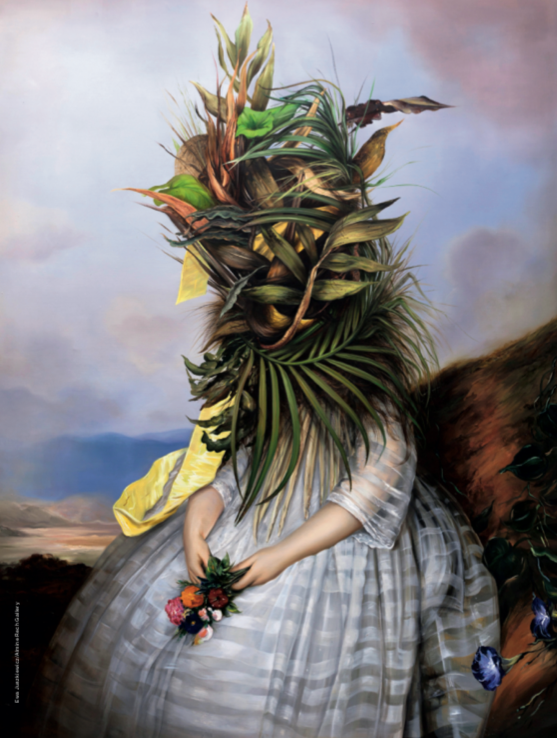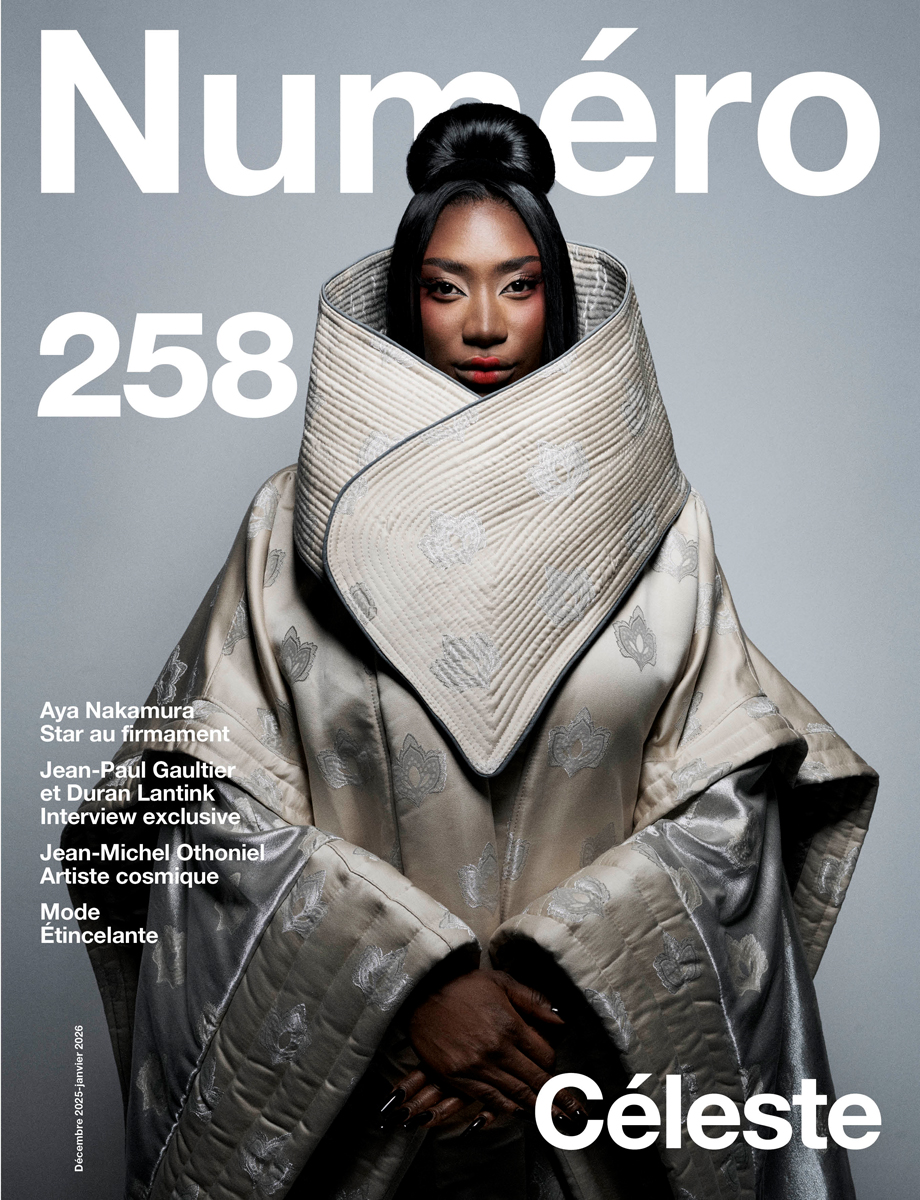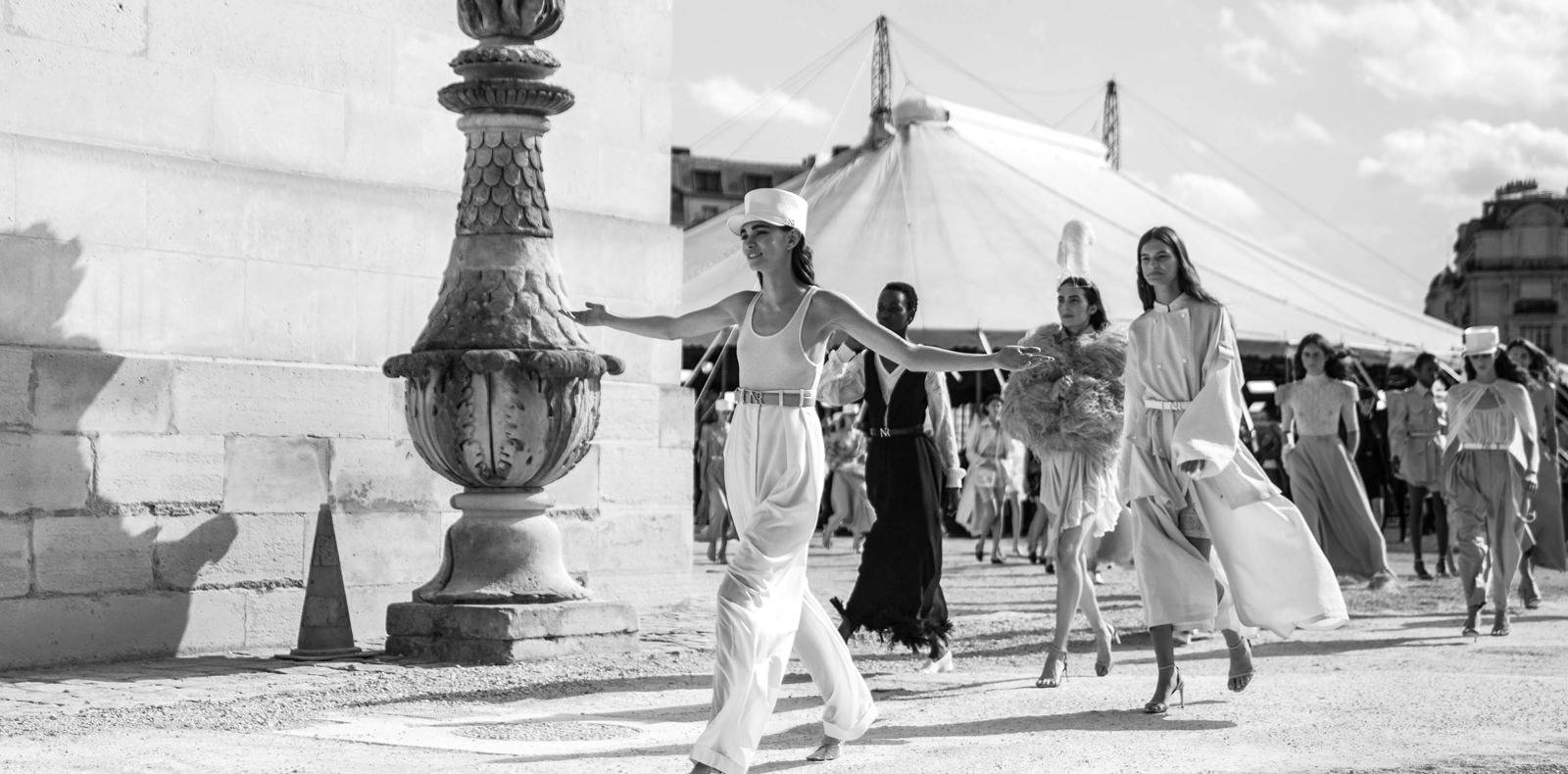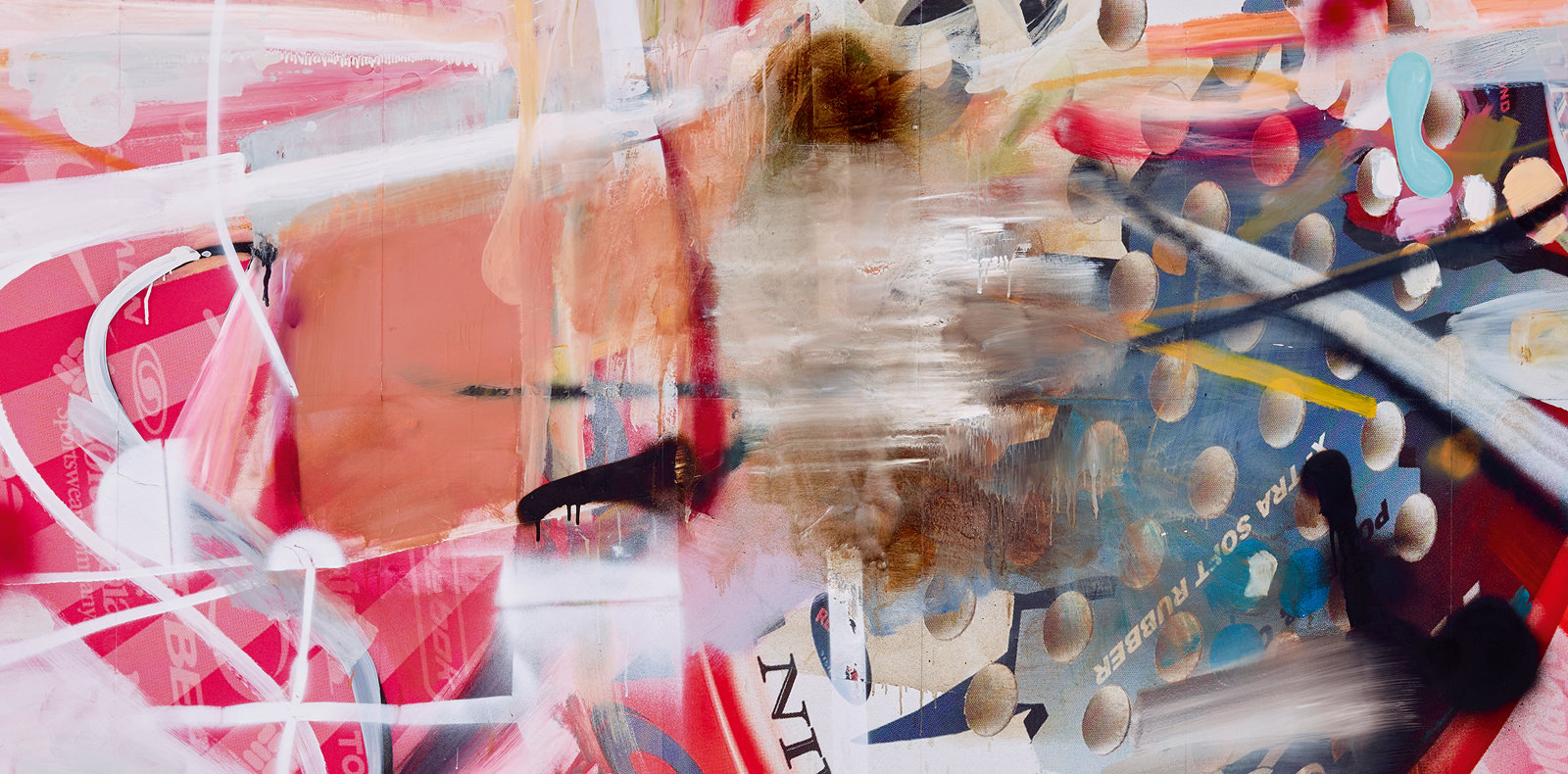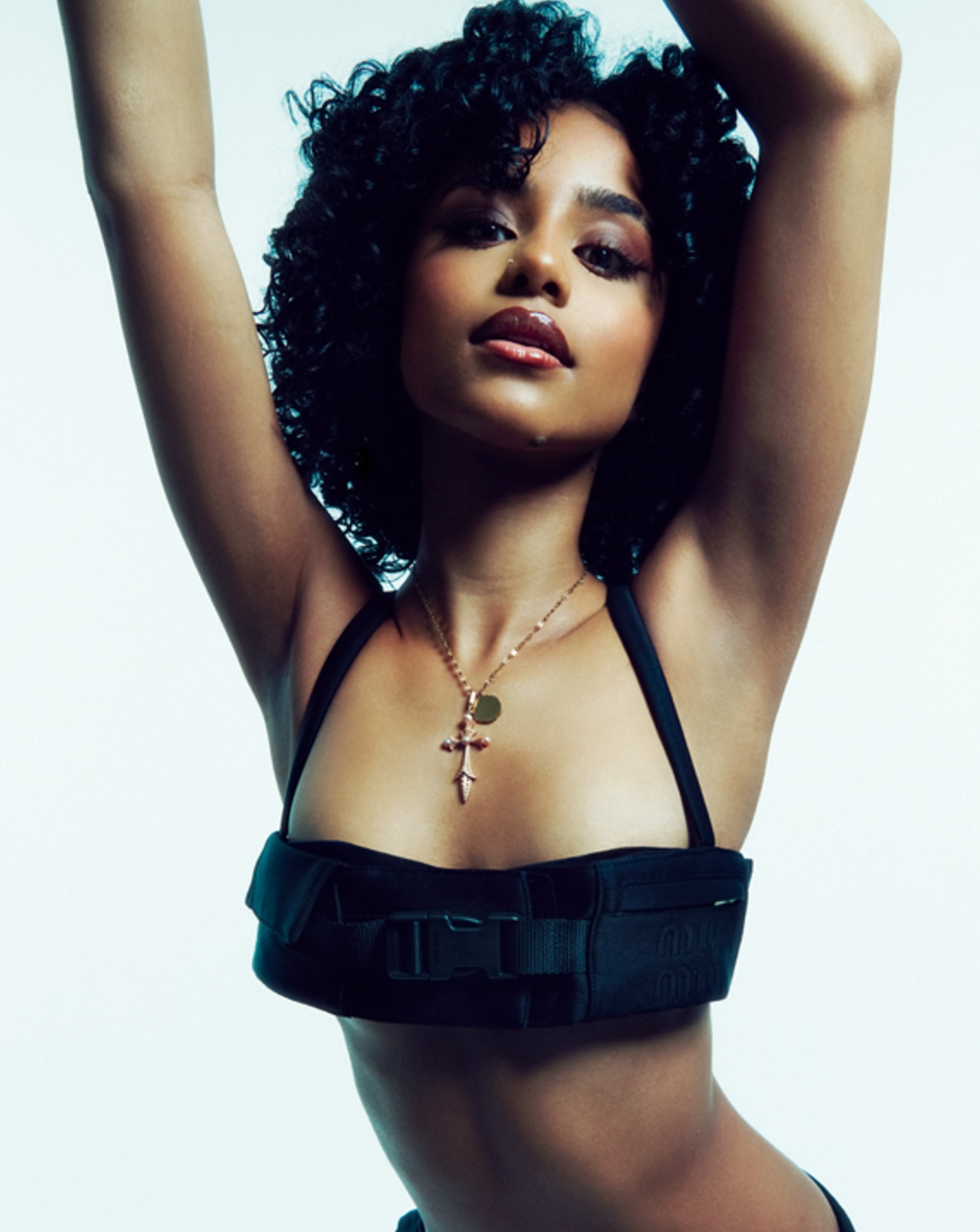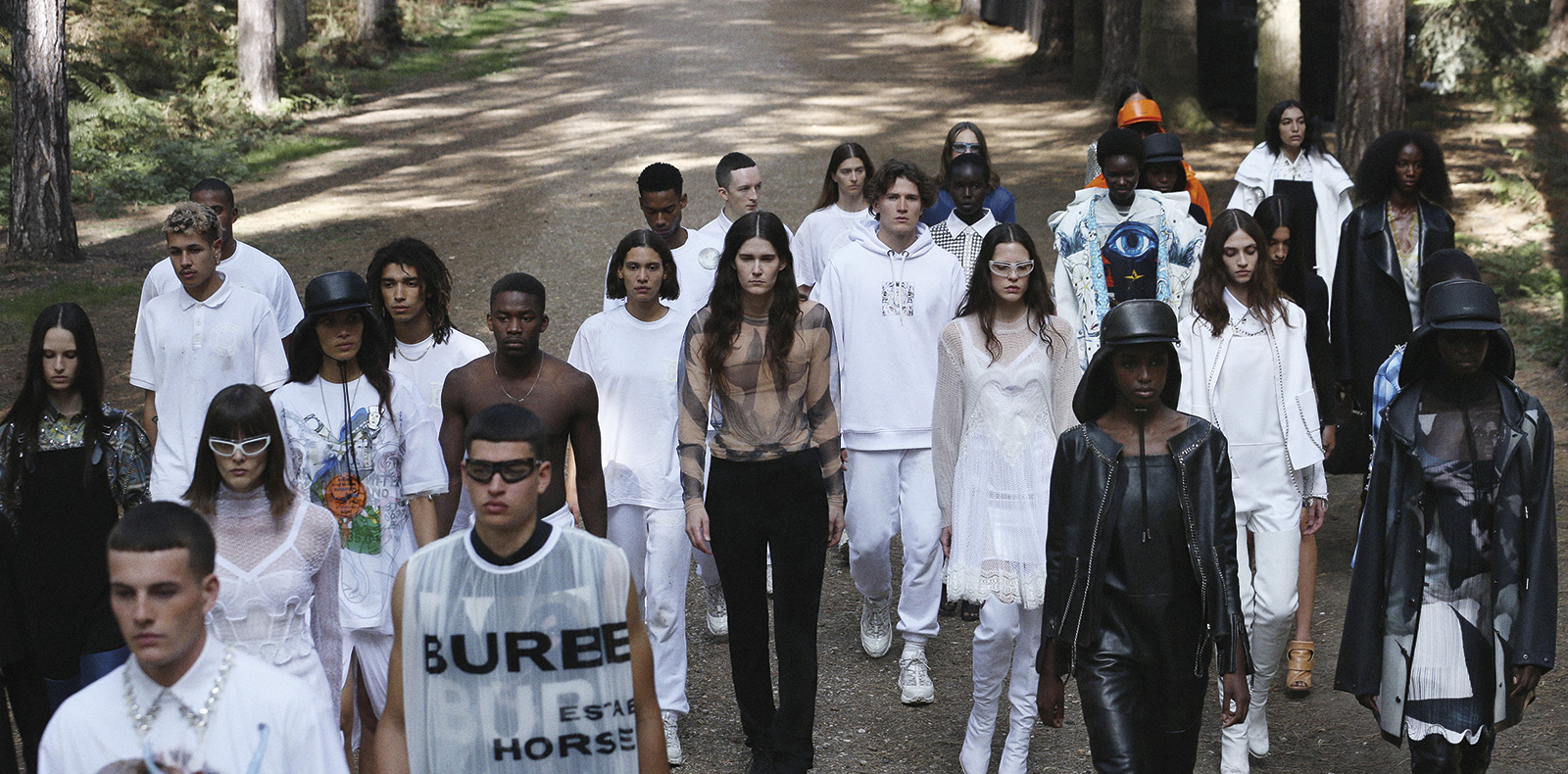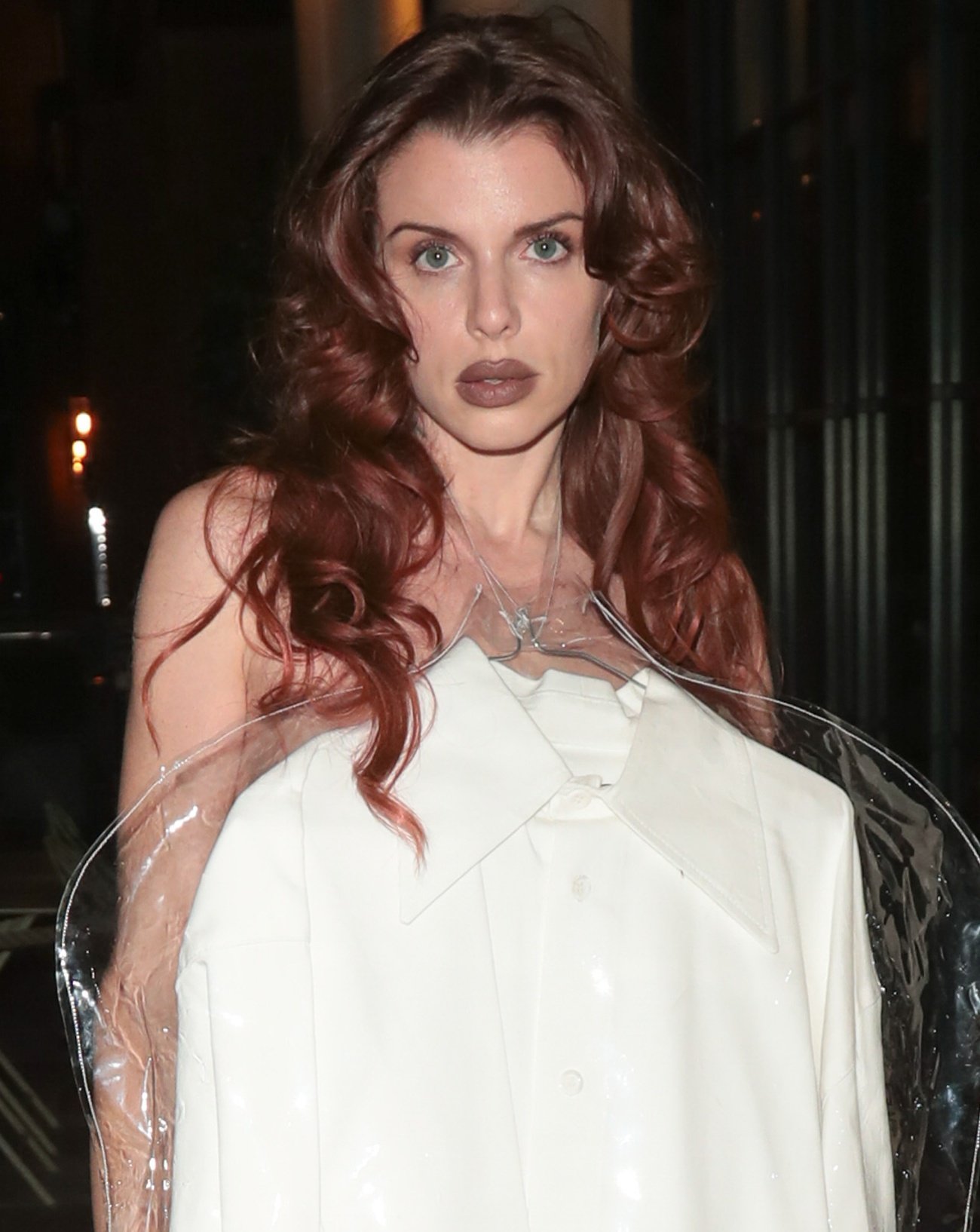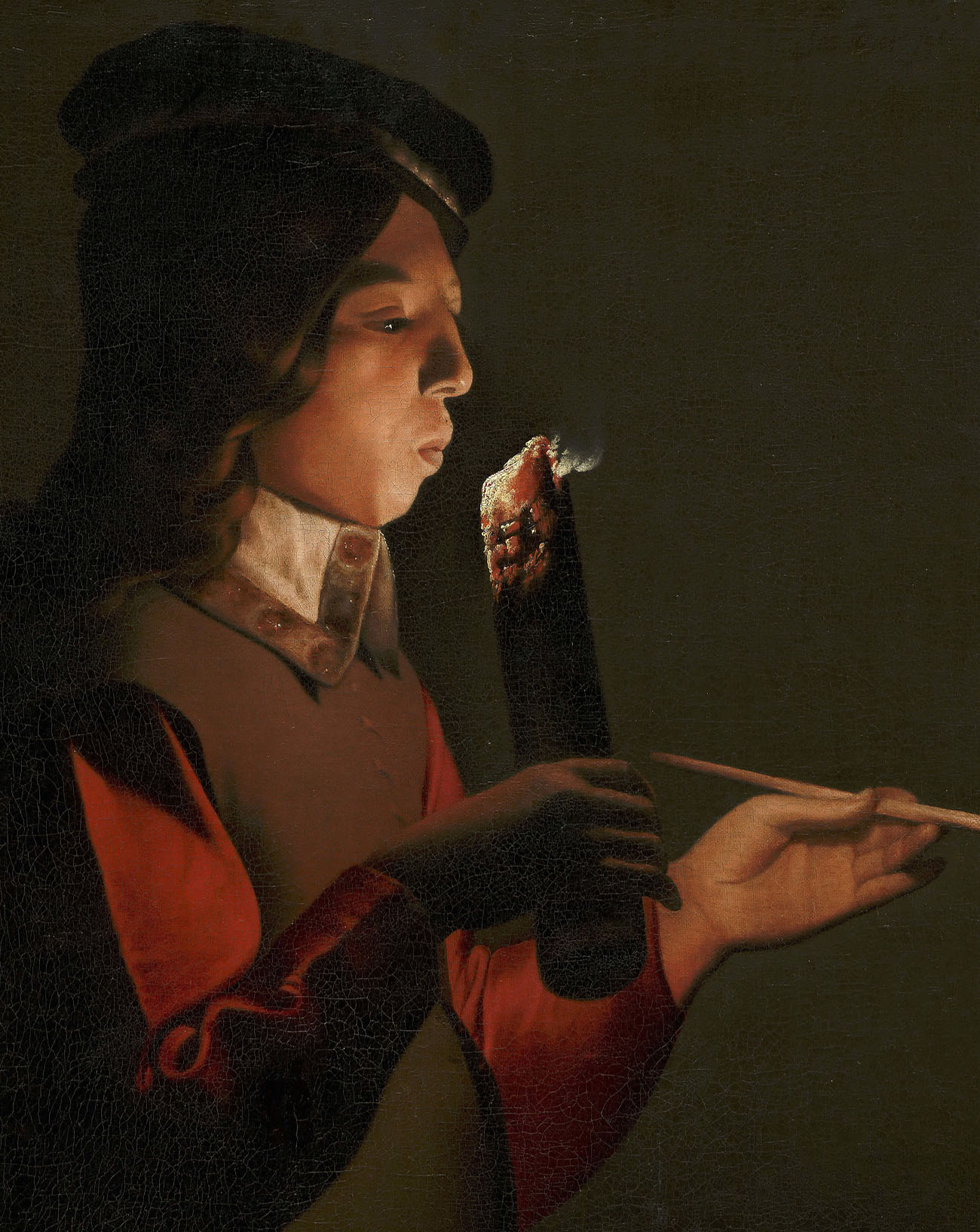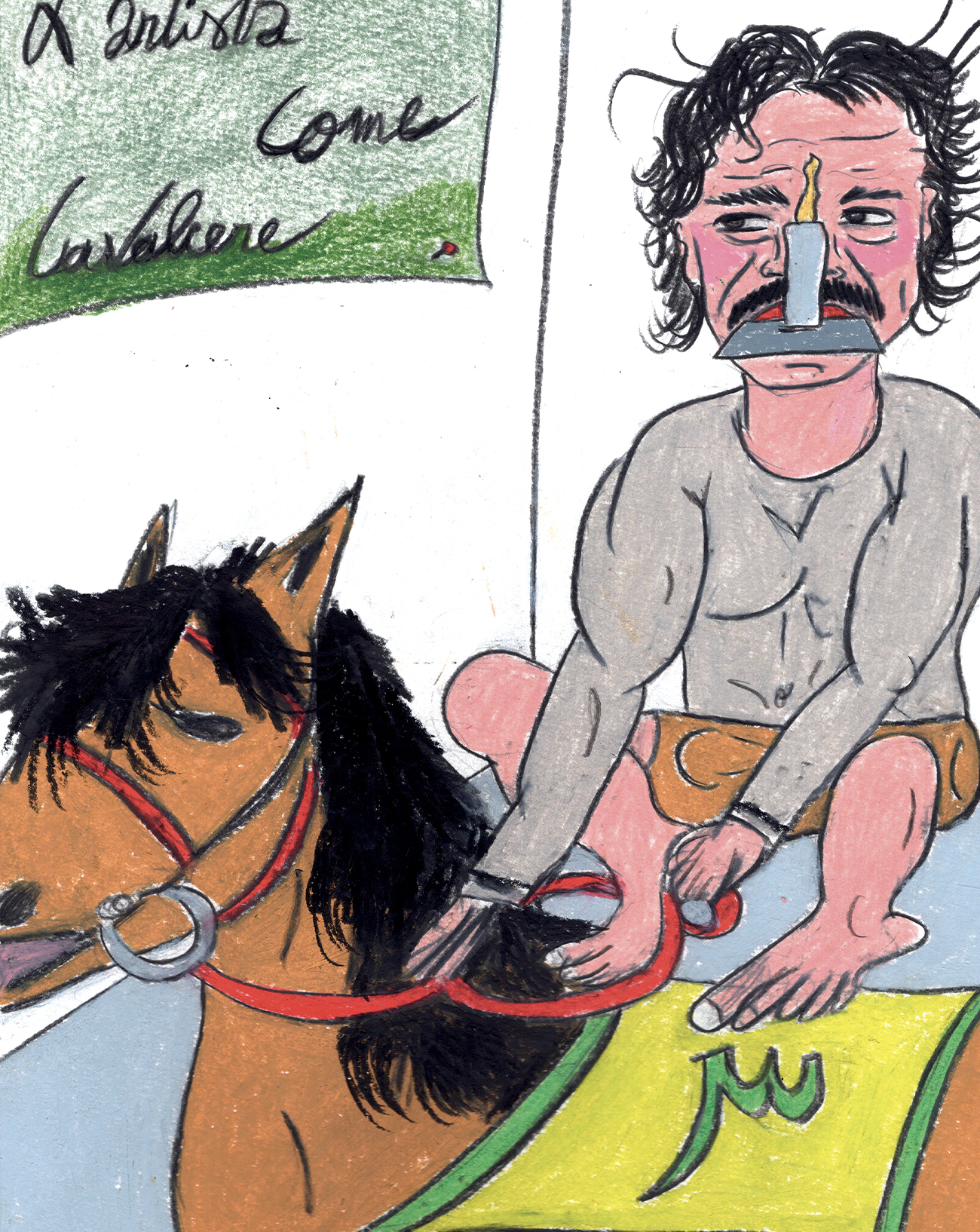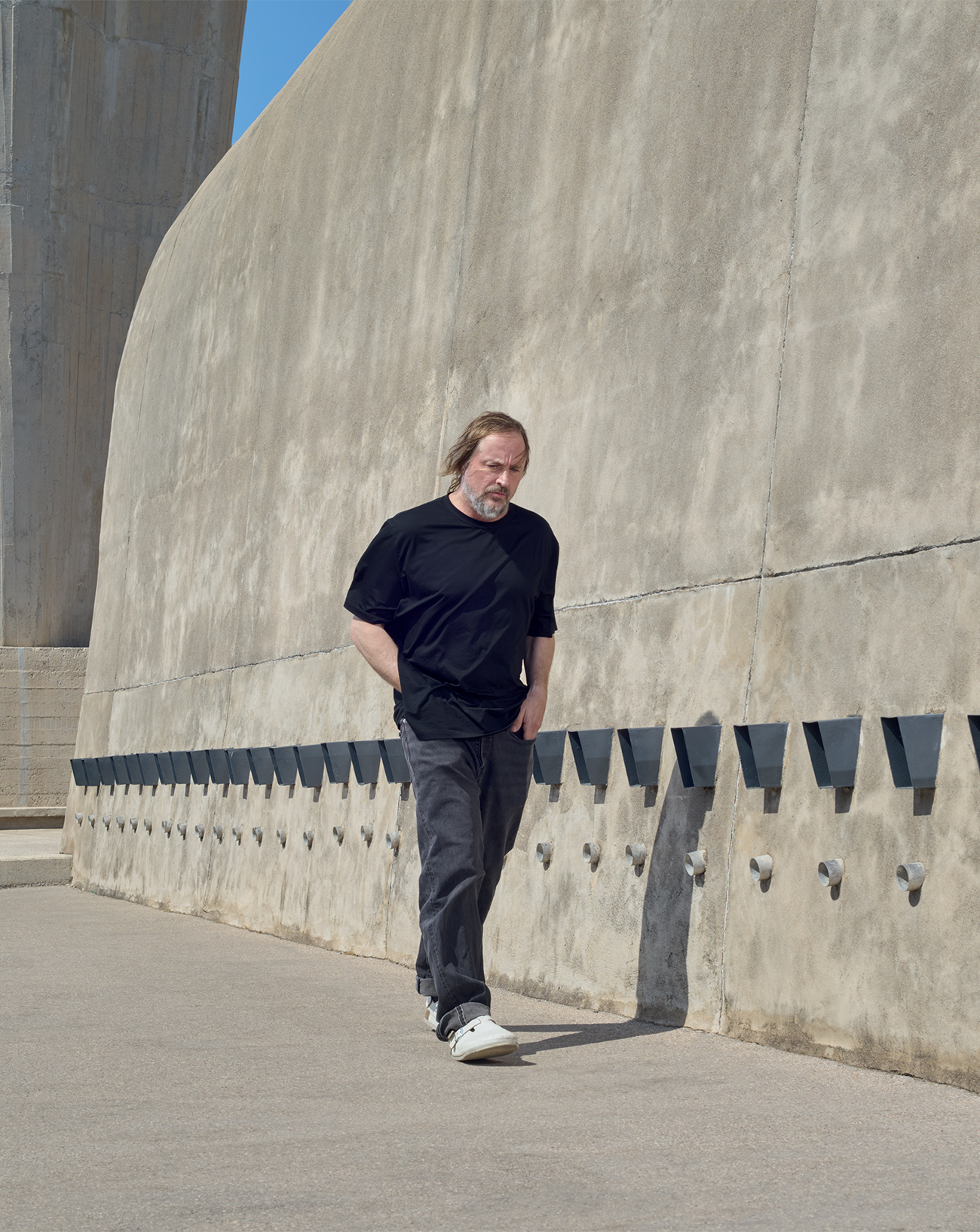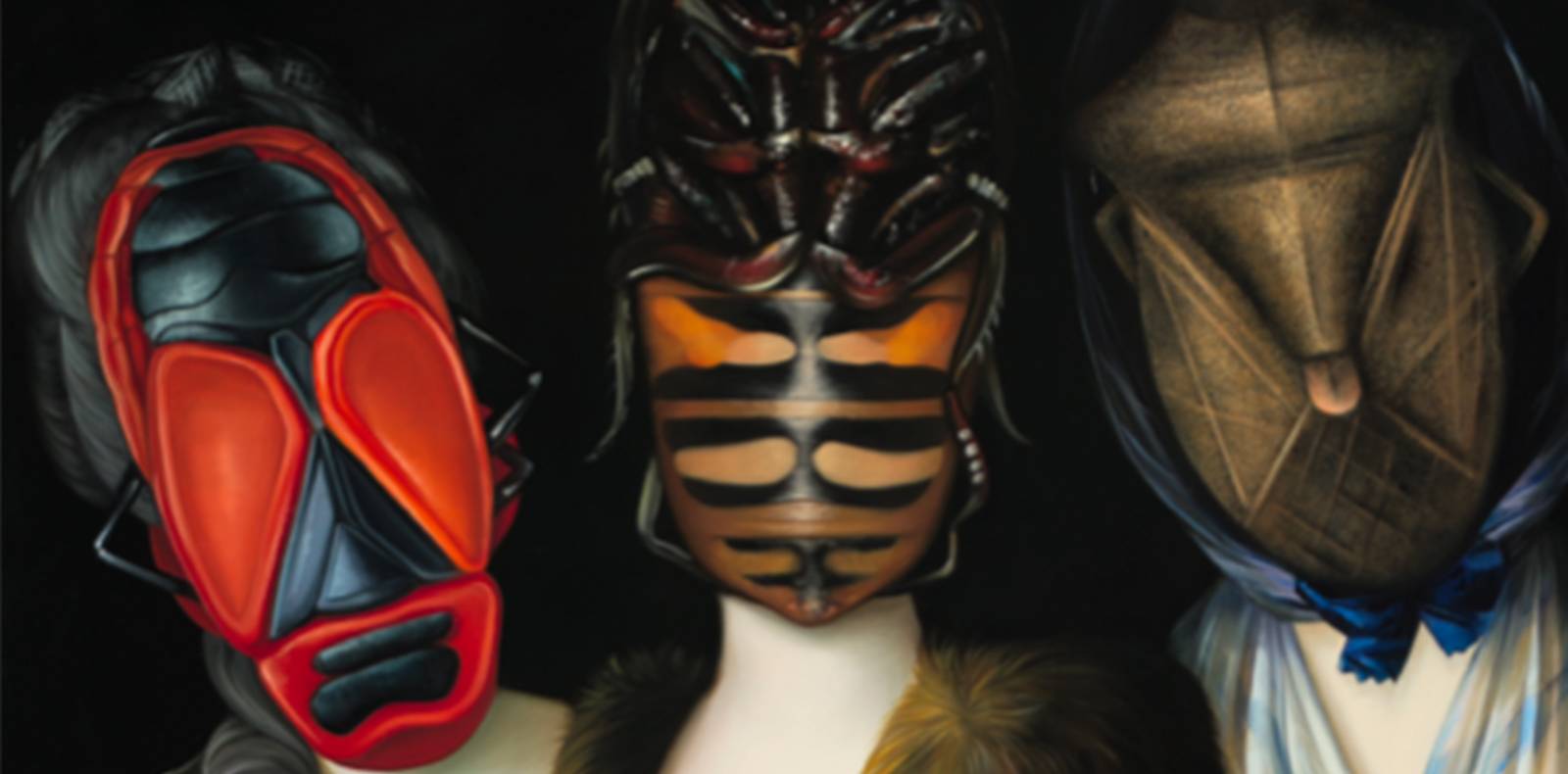
5

5
Ewa Juszkiewicz reappropriates old-master canvases
Peintre virtuose à seulement 35 ans, Ewa Juszkiewicz puise dans l’histoire de l’art et s’approprie des toiles de maître pour les réinterpréter sous la forme d’inquiétants portraits contre nature.
Par Éric Troncy,
By Éric Troncy.
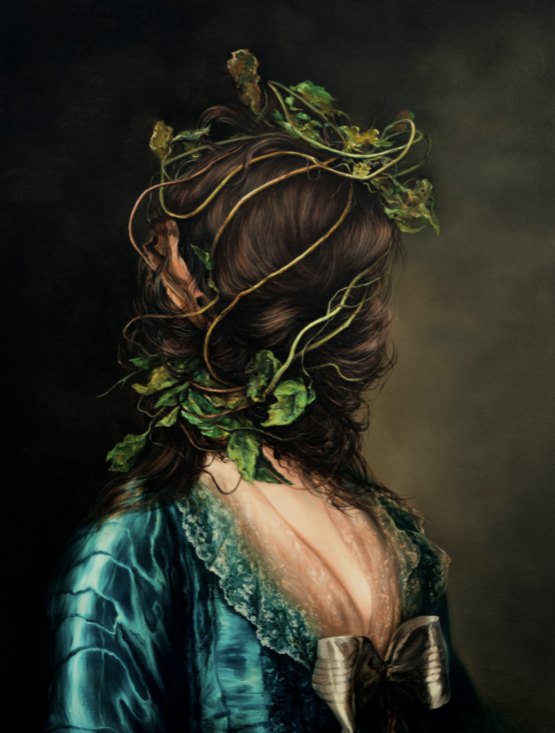
À 35 ans à peine, Ewa Juszkiewicz peint quasi exclusivement des femmes, qui ont déjà été peintes par d’autres, dans les siècles passés. La technique qu’elle a acquise durant ses dix ans d’études (2004-2013) à l’Académie des beaux-arts de Dantzig, puis de Cracovie, lui permet de copier à la perfection n’importe quel maître. Une disposition qui sert un projet plus vaste, à la croisée sans doute du souvenir des artistes “appropriationnistes” américains de la fin des années 70 et de comportements très contemporains induits par l’accès instantané à toutes les images d’œuvres via Internet et une évidente désacralisation de l’histoire qui touche à peu près tout.
Les personnages des tableaux dont Ewa Juszkiewicz livre sa version corrigée ont eu une vie propre. Les vêtements et la coiffure peuvent être des indicateurs de position sociale, de même que la posture ou les bijoux. Après le traitement qu’elle leur inflige, tout cela ne disparaît pas vraiment, mais est réorganisé d’une manière inquiétante. Entraîner l’histoire de la peinture classique et moderne vers un surréalisme version xxie siècle, tel pourrait être le cœur du projet artistique d’Ewa Juszkiewicz. Lorsque Louis Léopold Boilly fit, en 1807, le portrait de Mme Saint-Ange Chevrier, haut de 80 cm, il prit soin de la représenter les yeux tournés vers le ciel, son visage poupin inspirant la confiance. La version d’Ewa Juszkiewicz, elle, fait plus de deux mètres de haut, et surtout, le visage poupin et le regard angélique ont disparu, recouverts d’un entrelacs de tissu pareil à celui de la robe, d’où sortent diverses plantes vertes et une mèche de cheveux. Quant à la “reprise” du portrait d’Elisabeth Brockenhuus (exécuté en 1817 par Christoffer Wilhelm Eckersberg), la chevelure de Mme Brockenhuus a été tressée tout autour de son visage, le recouvrant tout à fait, comme une camisole.
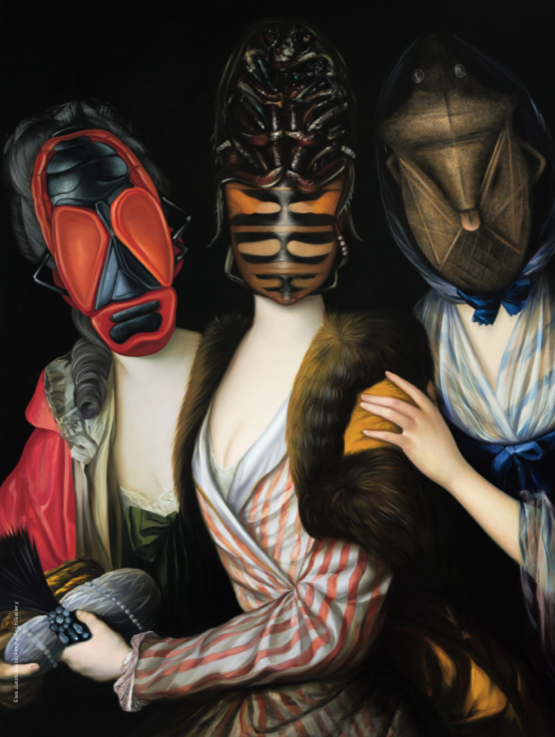
Ce processus devient plus complexe lorsque l’artiste s’attaque à des œuvres moins classiques. Ainsi sa “reprise” du célèbre tableau de René Magritte, L’Invention collective (1935), semble-t-elle en tout point pareille à l’original : nul besoin, en effet, pour s’inscrire dans le projet de Juszkiewicz, de changer quoi que ce soit à cette femme allongée sur le sable et qui est déjà affublée d’une tête de poisson. Les choses se compliquent lorsqu’elle “reprend” (car à l’inverse de Sturtevant qui affirmait que ses versions identiques à celles des grands artistes dont elle reproduisait les œuvres étaient des “originaux”, les siennes sont vraiment des “reprises”, comme dans l’industrie de la musique) des œuvres plus abstraites de Paul Klee, de Vassily Kandinsky ou de Jean Metzinger. De même lorsqu’elle travaille à partir de documents relatifs à des tableaux ayant été détruits ou perdus. Ou lorsqu’elle donne une version peinte d’une sculpture, telle cette Grande Tête (1912) d’Otto Freundlich, sculpture en plâtre classée “art dégénéré” par les nazis.
Cette peinture essentiellement figurative, si simple à regarder, possède assurément une dimension conceptuelle qu’on ne trouve qu’occasionnellement dans la production picturale actuelle. Car si les altérations sont le quotidien des images numériques, elles ne sont pas, en général, infligées à la peinture avec les moyens propres à ce médium. “Mes peintures sont constituées de plusieurs couches et d’un grand nombre de glacis. L’ensemble du processus est très laborieux. Je consacre beaucoup d’attention aux détails, je peux passer plusieurs jours à les affiner”, explique Ewa Juszkiewicz. Et c’est bien parce qu’autant de soin a été apporté à la fabrication de ces curieuses versions de peintures anciennes que son œuvre sait, à la différence de toutes celles qui ont renoncé à le faire, nous “inquiéter”.
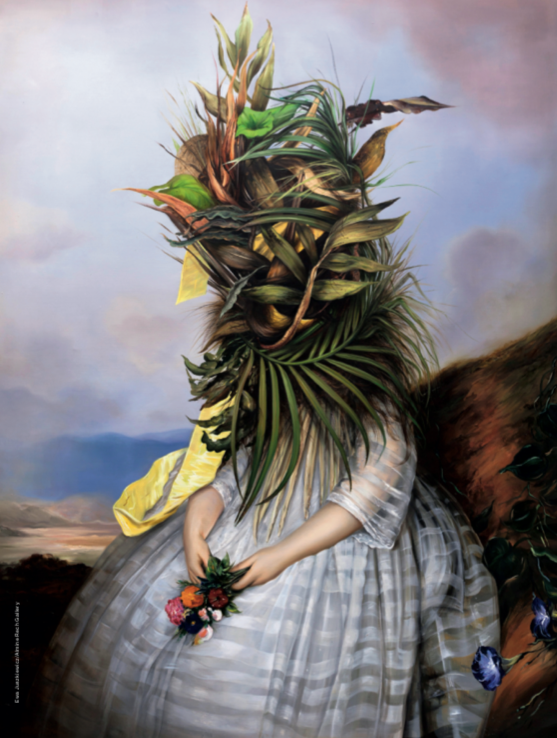
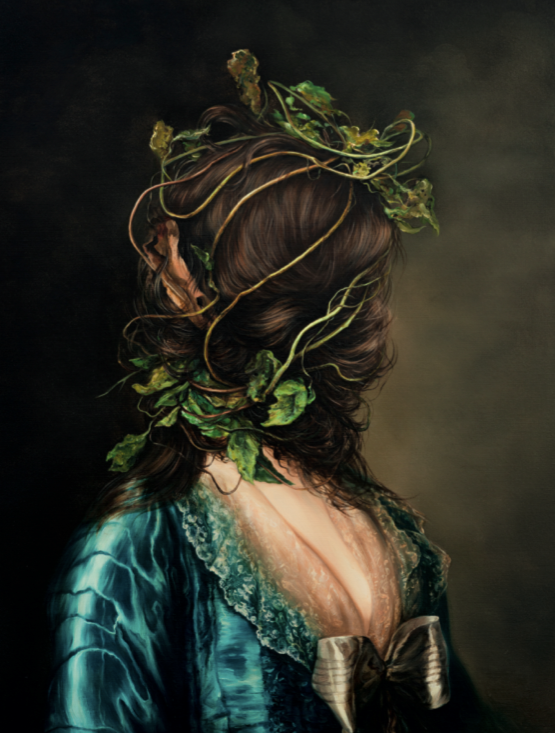
At just 35, she has already produced a solid pictorial oeuvre that is almost exclusively female. Women, mothers, wives, daughters who often remind us of something, not because we know them or because they are our contemporaries (no Miley Cyrus, unfortunately, nor Greta Thunberg, fortunately), but because they’ve already been painted by others, in previous centuries. The enlightened viewer is thus “reunited” with them in Ewa Juszkiewicz’s work, but, in the intimacy of her Warsaw studio, she has teletransported them to today’s world by introducing a few minor but spectacular modifications.
There’s often “something not quite right” in Juszkiewicz’s paintings. A bit like the moustache that Marcel Duchamp added to a reproduction of the Mona Lisa in 1919 (L.H.O.O.Q.): obviously La Giocanda is still recognizable, but this unexpected facial hair pushes the portrait into another, perhaps temporal, dimension. Juszkiewicz doesn’t use readymade reproductions but paints pictures that are largely identical to the originals, with a preference for portraits of the 15th to 19th centuries, although not exclusively. While studying art in general and painting in particular at both the fine arts school in Dantzig (2004–09) and the academy of fine arts in Krakow (2010–13), she acquired sufficient technique to copy to perfection not just the great but also the lesser and mediocre masters – in other words to reproduce faithfully any picture she wishes. Which of course on its own would not make her an artist, simply a copyist. But her exceptional technique is merely an instrument serving a bigger project, a hybridization no doubt of an “appropriationist” approach (as practised by certain American artists in the late 1970s) and highly contemporary attitudes that derive from both instant access to all the images on the Internet and an evident desacralization of history, which touches just about everything today.
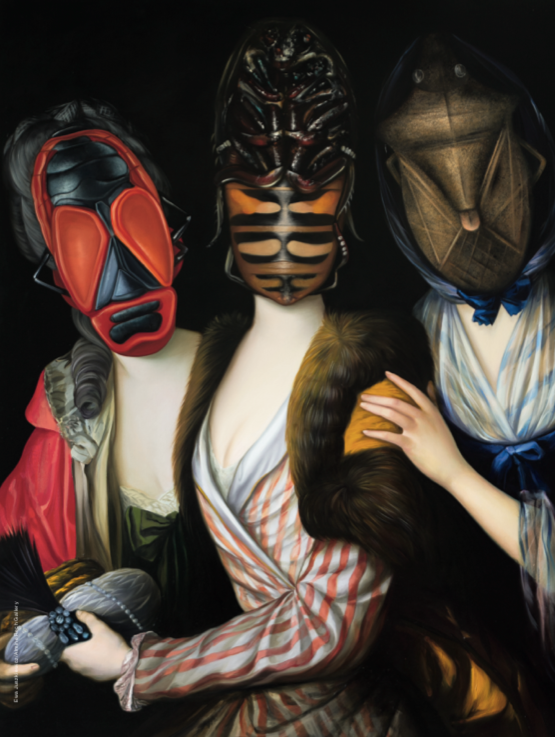
For, let’s face it, the modification of historic images has now become commonplace. Take the poster for the 2017 Cannes Film Festival: essentially a 1959 shot showing Claudia Cardinale dancing among the rooftops of Rome, her skirt lifted by the wind to expose a glimpse of her legs, it was retouched to give Cardinale a thinner waist, a bigger bust and more slender arms. Or the 2009 poster for a show about film director Jacques Tati, from which M. Hulot’s famous pipe was airbrushed out in favour of a child’s toy windmill. A photo of Jean-Paul Sartre, which was used on the cover of a Bibliothèque nationale de France catalogue in 2005, suffered the same fate, the writer’s legendary cigarette being edited out. Such retouches and modifications are com- mon currency in fashion photography, but they make for a more curious effect with respect to images that already had a life before being retouched, and are subsequently altered in response to the mores of our times.
In the same way, Juszkiewicz’s corrected pictures have had a life before her interventions, and the female figures represented in them have also had a life before being portrayed, one which their portraits usually try to capture at least with respect to context – clothing, hairstyles, jewellery and poses are carefully chosen to indicate social rank. After processing by Juszkiewicz, none of that actually disappears, but is reorganized in a rather disturbing fashion: when a subject’s head is replaced by thick vegetation, the shadow of Surrealism and the Comte de Lautréamont’s “fortuitous encounter on a dissecting table between a sewing machine and an umbrella” immediately come to mind. Indeed this might be the essence of Juszkiewicz’s artistic project: leading the history of classic and modern painting towards a 21st-century version of the Surreal. While it’s become common for fashion designers to look for inspiration (sometimes to the point of parody) in art history, it’s far more unusual for artists to be inspired by the world of fashion. But Juszkiewicz says it has greatly influenced her. “I discovered the work of Rei Kawakubo, Iris van Herpen and Alexander McQueen,” she explained to Numéro. “At the same time I’d always been fascinated by the past, the history of the portrait, of beauty and of fashion. I started to ask myself what the limits of portraiture were. How can you represent and apprehend a human body without a face? I was interested in the possibility of replacing the face by objects and phenomena that don’t occur in nature. As a result, I started submitting traditional portraiture to various experiments, observing the effects of treatments such as transforming the face into another form, integrating it into the environment or completely erasing it.”
When, in 1807, Louis Léopold Boilly painted the portrait of Mme Saint-Ange Chevrier (now at the Nationalmuseum, Stockholm), he depicted her with her eyes raised to heaven, her doll-like face exuding trustworthiness. Juszkiewicz’s version is, to start with, more than twice as large, measuring 2 m in height where the original is under 80 cm and, above all, the doll-like face with its angelic expression is gone, covered with a mass of fabric that matches the sitter’s dress. From this strange sort of collapsed turban, various plants and a lock of hair protrude. As for Christoffer Wilhelm Eckersberg’s 1817 portrait of Elisabeth Brockenhuus, which was itself taken from a painting by Emil Hannover, Juszkiewicz has given us an almost Cronenbergian version, Mme Brockenhuus’s hair having been plaited all over her face, covering it up like a sinister mask.
This simple and remarkably effective process becomes more complex when Juszkiewicz tries her hand at works that are not so well known, taking her project of “reprises” in less literal directions that give it all its particularity. On the one hand there’s her “reprise” of Magritte’s famous 1935 picture L’Invention collective, which is identical to the original – given the parameters of her project, there was no need for Juszkiewicz to change anything at all about this woman reclining on the sand with a fish for a head. Things become more complicated when she “covers” (for unlike Sturtevant, who claimed that her versions of paintings produced by great artists were in fact “originals,” Juszkiewicz’s are really covers in the sense of reworked versions of songs) more abstract works by Paul Klee, Wassily Kandinsky or Jean Metzinger, or when she works with documents relating to paintings that have been damaged, destroyed or that have disappeared, or produces a painted version of a sculpture, such as Otto Freundlich’s 1912 Large Head (The New Man), a plaster work that was labelled “degenerate” by the Nazis.
Juszkiewicz’s essentially figurative painting, so simple to look at, nonetheless possesses a conceptual dimension that is only occasionally found in current pictorial pro- duction. For while retouching and alterations are commonplace in digital images, they’re not generally applied to painting with the techniques of painting. “I work every day, several hours a day,” explains Juszkiewicz. “The nature and technique of my paintings require long and continuous work, which, for a single canvas, usually takes several weeks. I use traditional techniques, the old-fashioned way. My paintings are made up of several layers and a large number of glazes. The whole process is very laborious. I pay a lot of attention to details, which I spend hours refining.” And it’s precisely because so much care has been put into these curiously reworked portraits that Juszkiewicz’s oeuvre still has the power to “disturb” us.
